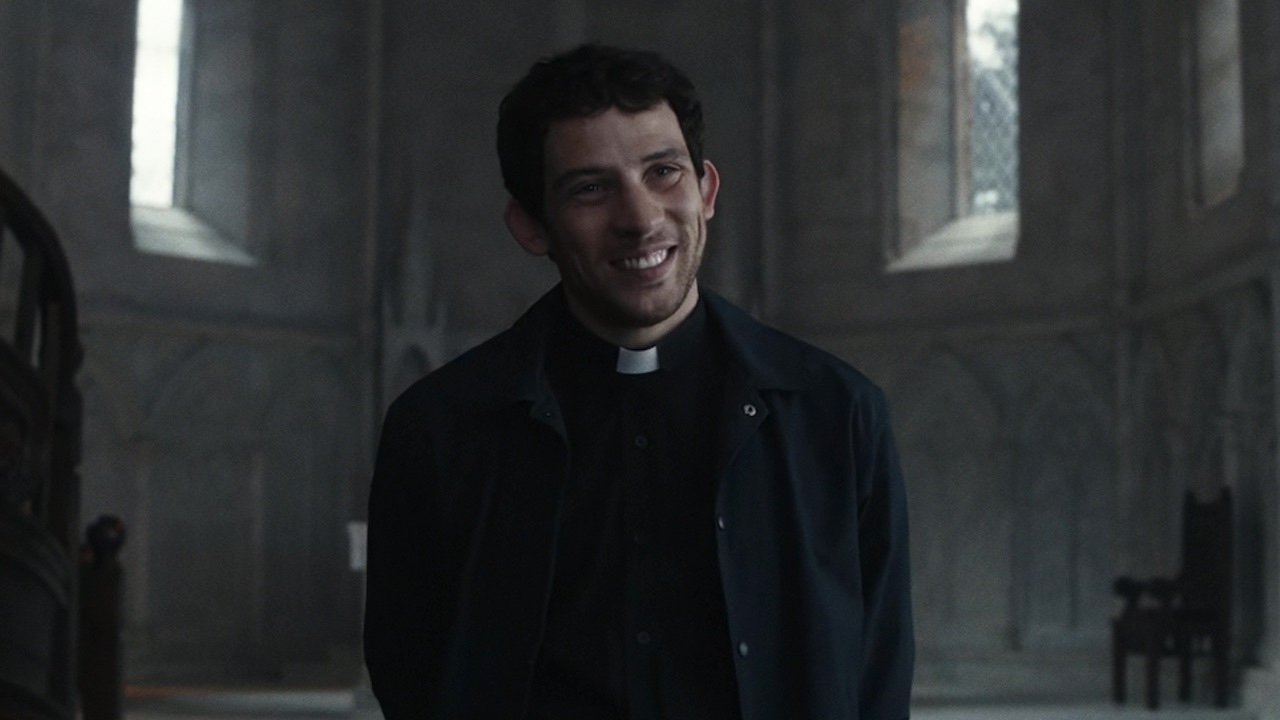The French Dispatch Ending: The Meaning Behind The Three Main Stories In The Wes Anderson Movie
Watch out for those convoluted and practical spoilers.
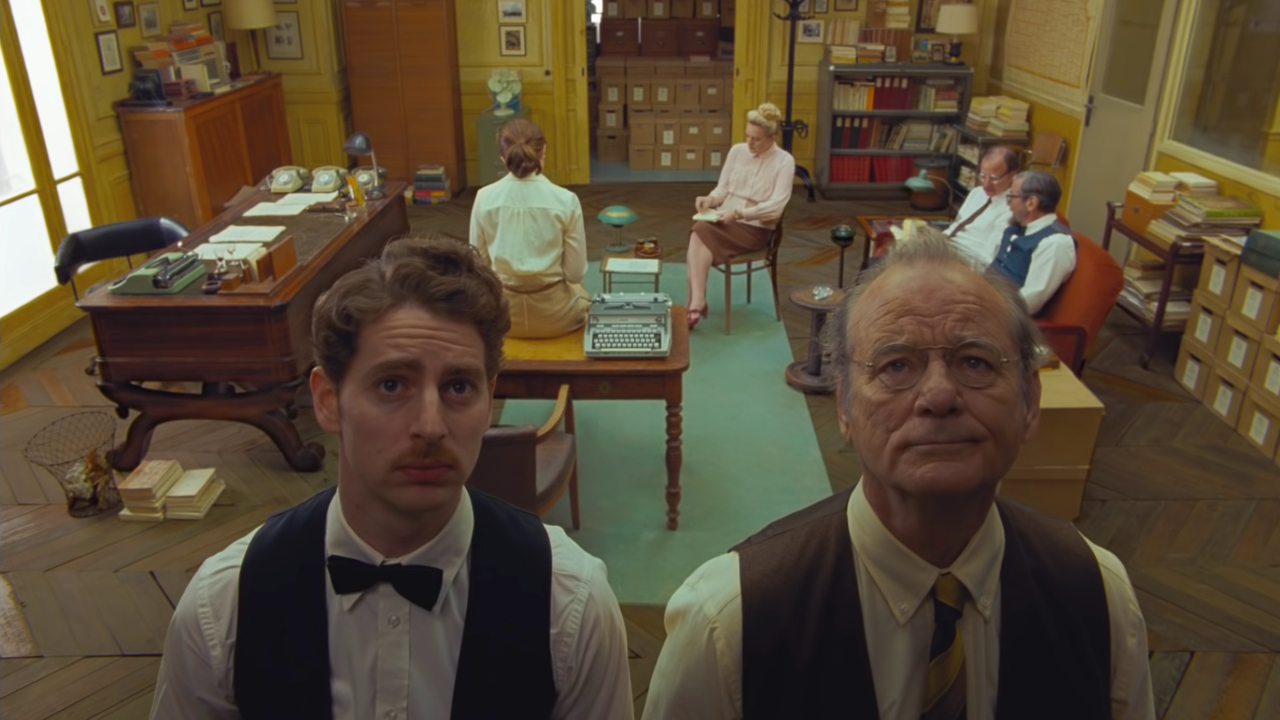
SPOILER WARNING: This article goes into all the details about The French Dispatch and its various stories. If you have yet to watch the new Wes Anderson movie, stop here, jump on a moped, and find the closest cinema.
Wes Anderson’s latest quirky and surprisingly poignant movie, The French Dispatch of the Liberty, Kansas Evening Sun, is finally out in theaters after what seems like years of trailers, teases, and rescheduled release dates. Centered on the staff of a fictionalized version of The New Yorker — played by Bill Murray, Owen Wilson, Elisabeth Moss, and more stars than there are in the sky — as they put together one final issue, the movie features a trio of well-written, well-staged, and expertly-acted short films in the form of articles about different moments in the history in the French town of Ennui-sur-Blasé told through the eyes of three of the newspaper’s most talented writers.
Below I will break down each of those three stories (as well as the overarching narrative thread that ties them all together), explore their meanings, and offer my own interpretations of The French Dispatch ending. As the film’s narrator says in the film’s opening, The French Dispatch is both a convoluted and practical ode to journalism and the modern world (or, at least, mid-Century France).
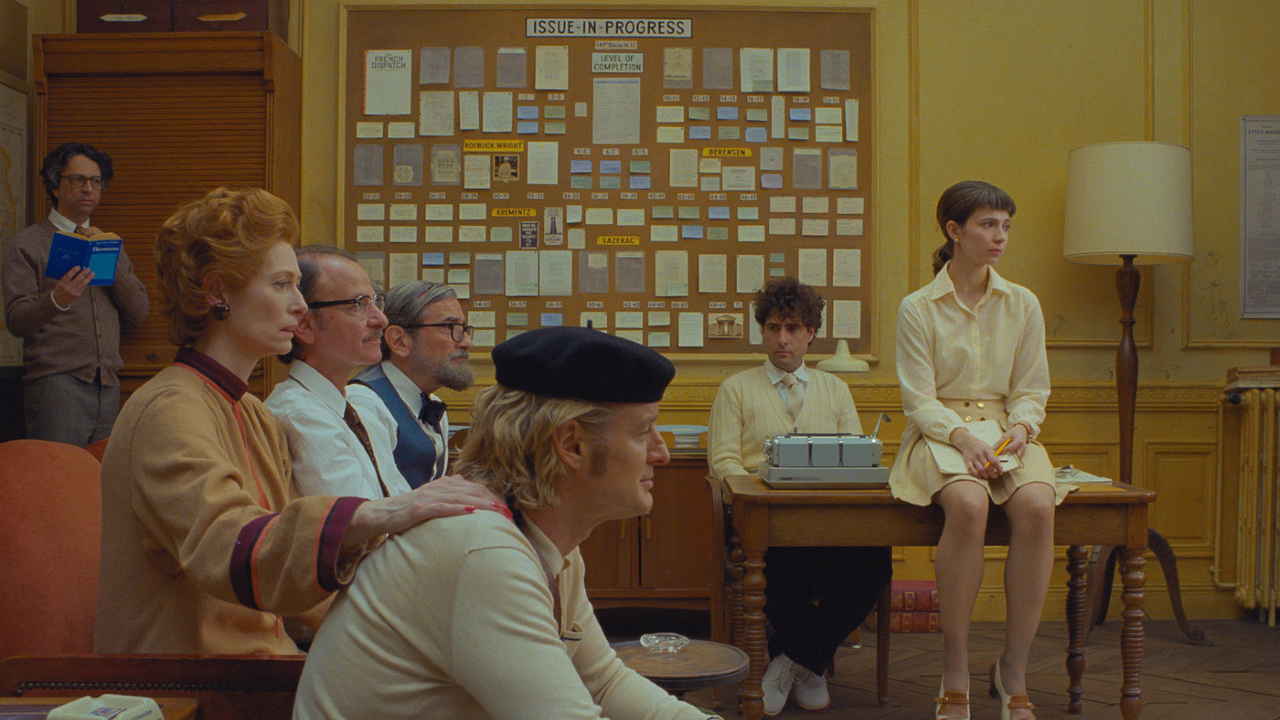
What Happens In The French Dispatch
The latest Wes Anderson movie, The French Dispatch, is split up into three main stories that are bookended by a prologue and epilogue, both of which take place on the day the newspaper’s esteemed founder and editor, Arthur Howitzer Jr. (Bill Murray) suddenly dies of a heart attack, leaving his staff with the unenviable task of planning the final edition of the French bureau’s weekly magazine, carried by the Liberty, Kansas Evening Sun.
Over the course of the movie, these three stories — plus a travelogue from the paper’s bicycle-enthusiast reporter, Herbsaint Sazerac (Owen Wilson) — are told in a dazzling display of journalistic contradictions and musings from three writers who can’t help but make themselves part of their respective stories, no matter how much grief this brought to their late editor.
In the end, Arthur Howitzer Jr. dies, but his love for his writers, their quirks, and the mastery of the written word carries on as they see the final printing of the beloved paper and refund subscribers for future issues that will never go to print.
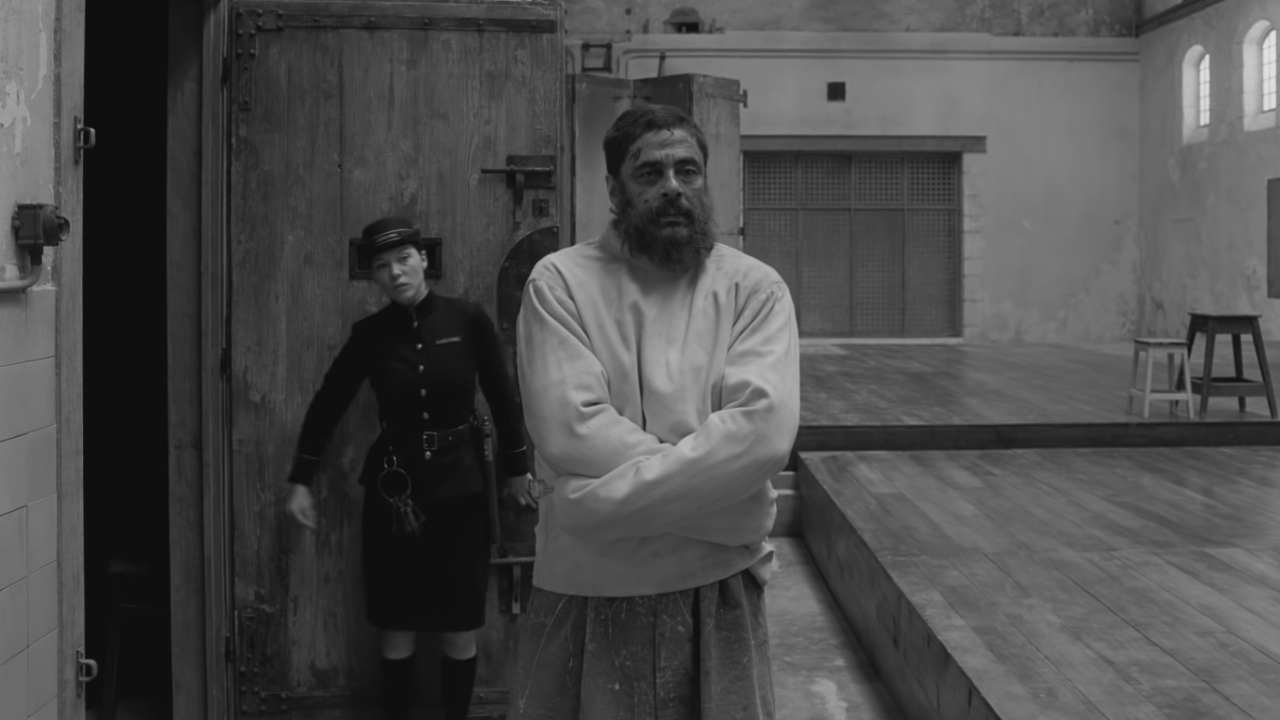
What The Concrete Masterpiece Says About Modern Art
The first story featured in The French Dispatch, “The Concrete Jungle,” follows writer J.K.L. Berensen (Tilda Swinton) as she recounts how Moses Rosenthaler (Benicio del Toro) went from a convicted murderer serving 50 years in a French prison, to one of the most prolific and mysterious painters in the art world after fellow prisoner, Julien Cadazio (Adrien Brody), discovered his portrait of prison guard Simone (Léa Seydoux).
Your Daily Blend of Entertainment News
Over the course of this 30-some-odd-minute short film, Rosenthaler is transformed from a grimacing and suicidal alcoholic inmate (14 bottles of mouthwash in a week) to something of a celebrity, thanks in part to Cadazio (and his uncles/business partners played by Henry Winkler and Bob Balban), who fails to understand the pain or meaning behind the modern art and instead just being on the forefront of something new.
As the short concludes, Cadazio organizes a showing of Rosenthaler’s latest, three-year project at the French prison. When Cadazio comes to the realization that his prized piece of art is stuck in the walls of the prison, he flips his lid, not because he doesn’t like the paintings, but because he believes he can never remove them and show them off to the world, which would prevent him from getting his glory. Following a riot, which results in numerous deaths and even more injuries, Cadazio decides to remove the wall itself and have it airlifted to a private museum, never truly understanding the meaning of art.
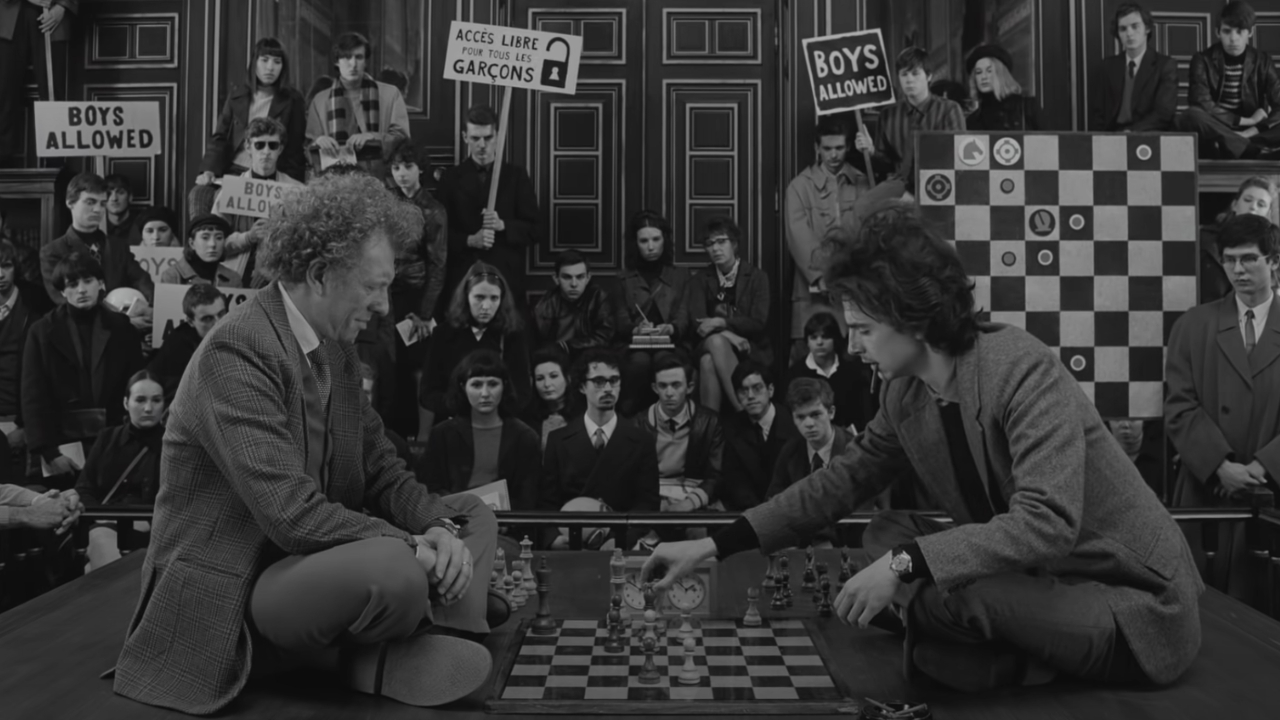
What Revisions To A Manifesto Says About Revolutionary Ideals And Idols
The second story featured in The French Dispatch, “Revisions to a Manifesto,” follows Lucinda Krementz (Frances McDormand), a writer obsessed with maintaining “journalistic neutrality” who never practices what she preaches, as she covers the “Chessboard Revolution,” a student protest that grew out of male students’ demands to be able to enter female dorms at their school. Through this, she meets the students’ de-facto leader, Zeffirelli (Timothée Chalamet), whose manifesto she begins to edit before largely rewriting large sections while also adding footnotes and an appendix.
As the protest, and the relationship shared by Lucinda Krementz and Zeffirelli, drags on and becomes more complicated, the lines begin to blur as to whom is leading the revolution: the young idealist, the reporter with a twisted yet benevolent idea of journalistic integrity, or Juliette (Lyna Khoudri), a fellow protester who challenges Zeffirelli in more ways than one. The irony of the situation is that the students are protesting adults and the rule, all while using a manifesto that was fleshed out by the protestors’ enemy. This exploration of revolutionary ideas and idols is made all the more cynical when Zeffirelli dies fixing the student’s pirate radio and becomes a symbol of the movement through t-shirts, posters, and other goods bought and sold by the masses.
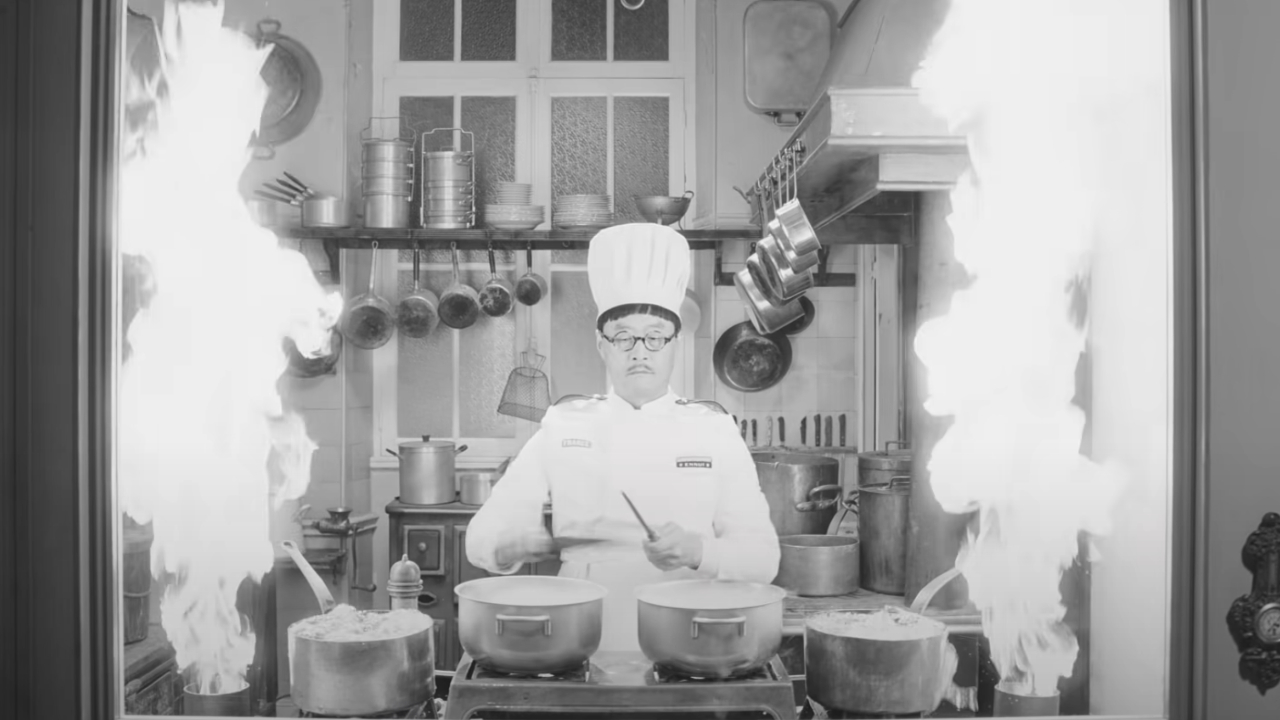
What The Private Dining Room Of The Police Commissioner Says About Being An Expatriate Living Abroad
The third and final story featured in The French Dispatch is “The Private Dining Room of the Police Commissioner” which sees writer Roebuck Wright (Jeffrey Wright) recall the night he was invited to have dinner with the Ennui Police Commissaire (Mathieu Amalric) prepared by the legendary police-chef Lt. Nescaffier (Stephen Park). This perfectly balanced short film features the kidnapping of the Commissaire’s son, a daring animated rescue sequence (like something out of a comic strip), and a near-fatal decision by the world-renowned chef to eat poisoned radishes he cooked for the boy’s captors, which gives him a new perspective.
But, the main focus of this story is the way in which ex-patriates live their lives in a foreign country. Roebuck Wright (who was largely influenced by acclaimed writer James Baldwin, who moved to Paris to escape America’s racism in the mid-20th Century) and Lt. Nescaffier are both living and working overseas in Ennui, a common bond that ties them together. At the end of the story, Arthur Howitzer Jr. tells Wright to include a quote from Nescaffier that he initially left out, regarding the unfamiliar and bittersweet taste of the poison (“seeking something missing, missing something left behind”). This argument could also be made for the other writers featured in the first two stories, but Wright’s connection with his subject here really drives the point home.

Why The Three Stories Selected For The Final Edition Of The French Dispatch Work So Well
In an interview with The New Yorker just before the release of The French Dispatch, Wes Anderson said the movie wasn’t so much of a love letter to journalism, but instead about journalists that he has loved and those who have meant something to him over the years. And, while Arthur Howitzer Jr. is technically based on two of the publication’s notable editors, Harold Ross and William Shawn, it’s easy to see Anderson himself in the grumpy and eccentric magazine editor who put together a handful of the best writers to share stories in which their “journalistic neutrality” fades away and they become part of the story.
In each of these stories, the writers almost completely lose track of what they were originally set to cover with their respective subjects and instead stumble upon something magical that offers them a new perspective on not only their craft, but also their lives. Each of three writers also perfectly sum up the quirkiness and distinct editorial style of magazines, one that’s somewhere between hard news and long-form prose. It’s brilliant, it’s captivating, and like Wes Anderson’s movies, it has its own, sometimes hard-to-explain style.
The French Dispatch is currently showing in theaters nationwide. We’re still a ways off from seeing Wes Anderson’s next feature film, Asteroid City, but there is still a whole slate of 2021 movie premiere dates to hold you over in the meantime.

Philip grew up in Louisiana (not New Orleans) before moving to St. Louis after graduating from Louisiana State University-Shreveport. When he's not writing about movies or television, Philip can be found being chased by his three kids, telling his dogs to stop barking at the mailman, or chatting about professional wrestling to his wife. Writing gigs with school newspapers, multiple daily newspapers, and other varied job experiences led him to this point where he actually gets to write about movies, shows, wrestling, and documentaries (which is a huge win in his eyes). If the stars properly align, he will talk about For Love Of The Game being the best baseball movie of all time.
